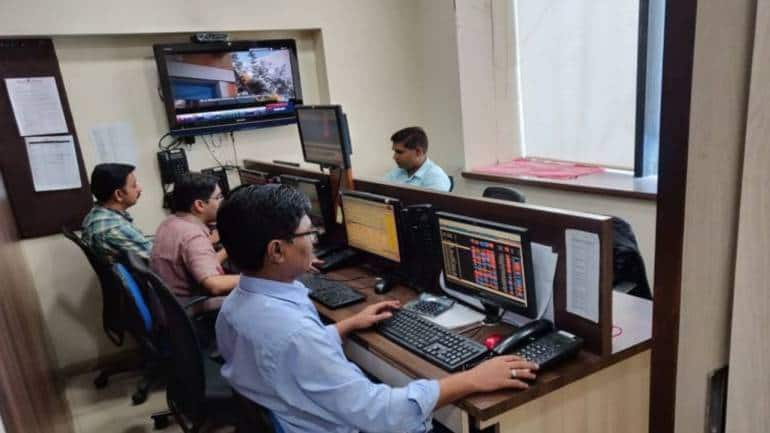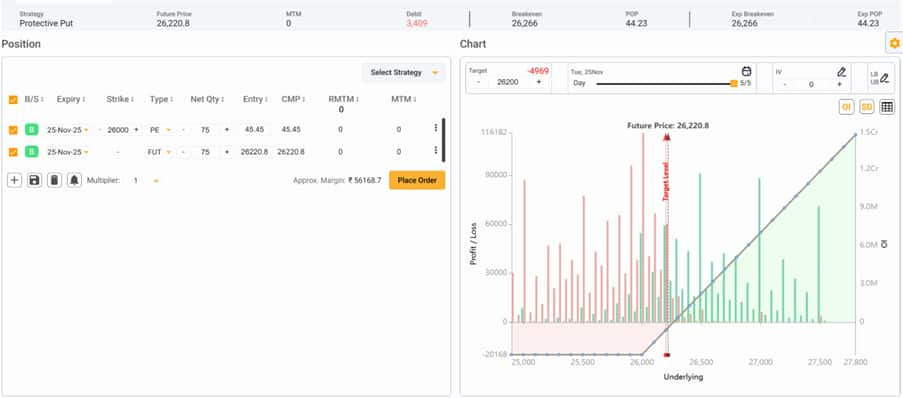Here's why Option trading is only for investors and not for traders
Options have been more recognised as investors' choice than traders', especially in more developed markets where Options have been available as instruments of trade for more decades
SHUBHAM AGARWAL | 29-Sep-19
Reading Time: 3 minutes

undefined Options trading has always been looked at as an activity undertaken by traders.
But, Options have been more and more recognised as investors' choice than traders' especially in more developed markets where options have been available as instruments of trade for many more decades.
The reason is very simple: investors will always have the commitment required for honoring the obligation created by a possible in-the-money expiry. On the other hand, investors with deeper pockets and longer duration of holding on to the underlying would have more appetite to bear the premium loss.
We need to keep in mind that the earmarked capital will be used as margin money while selling Puts and stock holding partially at least will be making good the margin money while selling Calls. For Buyside transactions, there would be a premium on money spent which would be just tiny fraction of investable funds. This can be considered as insurance money paid to reduce the possibility of getting stuck in a bad timing call on a good stock.
Let us have a look at four possible transactions with two options viz. Buy/Sell, Call/ Put and understand their utilities
Case #1.
An Investor first starts tracking the stock for that one sweet dip to get a bargain.
Here instead of waiting, Sell a Put option of a strike price, close to that lower market price. This would entail obligation of buying of the stock at strike price if the stock were to end up below strike price on the day of F&O expiry, else premium is pocketed.
Case #2.
Let us say after buying the stock goes up and the investment objective is almost attained.
Here instead of waiting again, sell a Call option of a strike price, closer to the price objective. This would entail obligation to Sell the stock at strike price, if the stock were to end up above the strike price on the day of expiry. If not, nothing happens, and the premium is pocketed.
In terms of transaction cost, one does pay a margin for both cases 1 and 2, which would come out of money ear marked for investment in case 1 and at least partially out of the Stock holding that can be used as collateral in case 2. And one would get remunerated with the Premium of option sold between (1-2 percent depending upon strike) while waiting around.
Case #3.
Now that we have addressed the greed (Buying lower and selling higher), let us understand how Options can help investors take care of their fears. First up, fear of losing value in portfolio in shaky markets.
Well, buy a Put of a strike below which one would not be comfortable holding the stock. In case the stock falls below the strike on expiry, we have a choice to Sell the stock at strike price.
Case #4
Lastly, the fear of losing while trying to catch a falling knife. While being the investor to the core and buying the stock amid the most pessimism, buy a Call instead of the underlying.
Now one gets choice to buy the stock on the day of expiry. Exercise the choice if the stock ends up above the strike price upon expiry. But in case if the stock were to fall further, just don't buy it.
These are basic yet overlooked utilities of Options that can come in really handy for investors .
Learn and read more about volatility meaning from Quantsapp classroom which has been curated for understanding of implied volatility from scratch, to enable option traders grasp the concepts practically and apply them in a data-driven trading approach
Recent Articles

3 best ways to hedge using Options: Shubham Agarwal!
22-Nov-25

When in doubt to write, do Iron Fly: Shubham Agarwal!
15-Nov-25

Identify potential turning points with advance-decline: Shubham Agarwal
08-Nov-25

Slow and spreads more efficient: Shubham Agarwal
01-Nov-25

Use implied volatility as probable top finder: Shubham Agarwal
25-Oct-25

How to trade potential breakout post consolidation: Shubham Agarwal!
18-Oct-25

Use Options OI for intraday trading: Shubham Agarwal
11-Oct-25

Monetize Vega, the impact of implied volatility: Shubham Agarwal
04-Oct-25

SHUBHAM AGARWAL is a CEO & Head of Research at Quantsapp Pvt. Ltd. He has been into many major kinds of market research and has been a programmer himself in Tens of programming languages. Earlier to the current position, Shubham has served for Motilal Oswal as Head of Quantitative, Technical & Derivatives Research and as a Technical Analyst at JM Financial.
Recent Articles

3 best ways to hedge using Options: Shubham Agarwal!
22-Nov-25 09:11:00

When in doubt to write, do Iron Fly: Shubham Agarwal!
15-Nov-25 10:48:00

Identify potential turning points with advance-decline: Shubham Agarwal
08-Nov-25 10:35:00

Slow and spreads more efficient: Shubham Agarwal
01-Nov-25 10:35:00

Use implied volatility as probable top finder: Shubham Agarwal
25-Oct-25 09:56:00

How to trade potential breakout post consolidation: Shubham Agarwal!
18-Oct-25 09:20:00

Use Options OI for intraday trading: Shubham Agarwal
11-Oct-25 09:45:00











